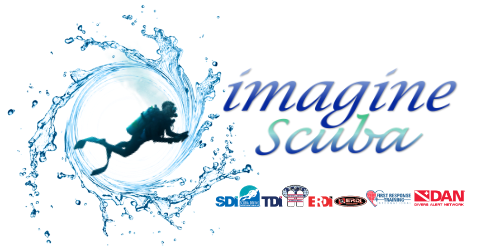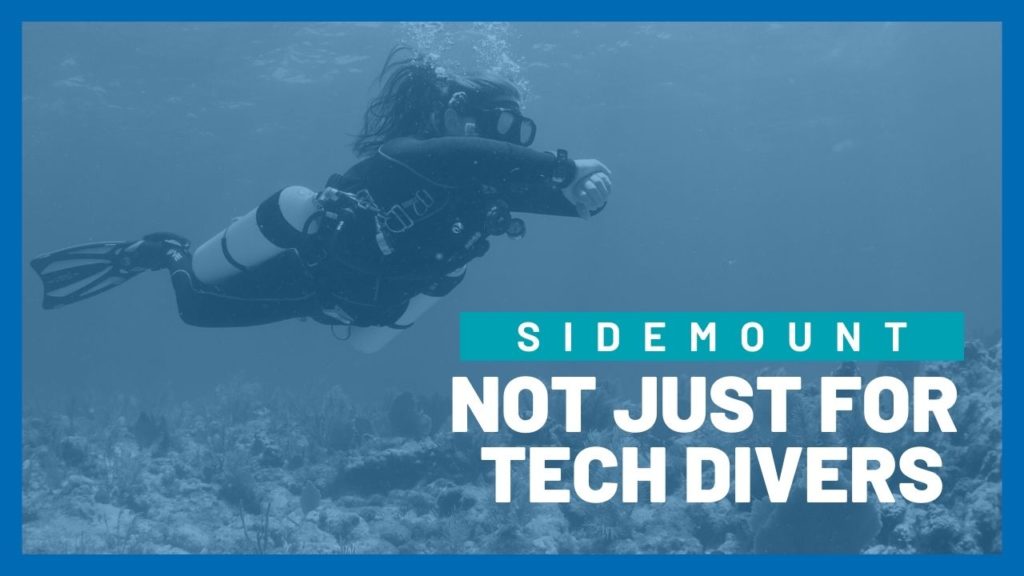In the 1960’s, dry cave explorers in the UK became the first “sidemount divers” when they began clipping scuba cylinders to their caving harnesses as a means to cross sumps, or water-filled cave passages. Over the past 50 years, countless divers and equipment manufacturers have developed and refined sidemount diving and configurations through trial and error.
Today we see many technical divers in sidemount configuration and it remains especially popular with cave divers. There are clearly countless benefits of sidemount for technical diving, but did you know many of them cross over to recreational diving as well? Yep, that’s right: sidemount is not just for technical divers. In fact, I believe that everyone could benefit greatly from a technical sidemount course, even if they do not have an interest in technical diving.
Here’s why everyone should try sidemount diving:
STRENGTHEN DIVING FUNDAMENTALS & KNOWLEDGE
I think it is important to constantly learn new things. If you’re looking for a course with the potential to truly challenge you, reframe the way you think about diving, and improve your fundamental skills tenfold, look no further than a technical sidemount course.
In addition to teaching you how to safely dive in a new configuration, a technical sidemount course is like boot camp for your diving fundamentals: buoyancy, trim, and propulsion.
Even if you have good buoyancy control going into the course, a good instructor will push you to fine tune it even further. This will force you to extend your awareness and control of where you are in the water at all times, even when being distracted by problems.
You’ll work on propulsion techniques and likely focus more on how you’re kicking than you ever have before. Your instructor will help you perfect your frog kicks and helicopter turns, show you how to backfin effectively, and teach you special techniques for silty areas. After your sidemount course, you’ll know how to move through the water more gracefully and efficiently than you thought possible.
Furthermore, you’ll think about trim more than ever before and you’ll start to see how seemingly small things like the weight of your regulators and the buoyancy profile of your fins have huge impacts on a diver’s natural trim and you’ll learn how to effectively compensate for these things.
COMFORT & STREAMLINING
In sidemount, cylinders are mounted at your sides under your arms rather than on your back, giving you a much more streamlined profile. Even with two cylinders, propelling yourself through the water and maintaining proper trim feels much easier in sidemount than in single tank backmount.
If you have back or shoulder problems, you’ll likely find sidemount more comfortable in general because it allows more flexibility in those areas and the bulk of the weight is not on your spine.
During a proper sidemount course, you and your instructor will spend a lot of time adjusting your sidemount system to fit and function just right. You’ll also spend time trying to get properly trimmed and adjusting trim weight placement as needed. This part of the process may feel frustrating to some, but as soon as your system, weights, and trim are all right where they need to be you will realize it was well worth the trouble. When done properly, sidemount is an incredibly comfortable configuration to dive in.
REDUNDANCY & LESS RELIANCE ON BUDDY
One of the biggest benefits of sidemount is it offers true redundancy in case of a gas or regulator failure. When diving with two tanks in sidemount configuration you have two completely independent cylinders, first stages, and second stages. If one of these points fails, you have a backup.
In a proper sidemount course with a qualified instructor you will learn how to independently solve various equipment problems that could come up while diving. This training and configuration makes you more safe, more self-sufficient and less reliant on a buddy. Self-sufficiency is especially beneficial if you travel without a regular dive buddy and find yourself buddied up with strangers often. I’ll address more benefits of self-sufficiency, specifically solo-diver training, in a future post.
MORE GAS = LONGER DIVES
If you’re an air hog, or simply enjoy making long dives, sidemount configuration is a great way to carry more gas with you while staying streamlined. While diving twinset would be another way to have more gas, you may not be able to find twinset tanks at every single diving destination you visit. Another benefit of sidemount is that you do not need to hunt down special tanks to dive in sidemount configuration.
SIDEMOUNT TRAINING PREPARES YOU FOR THE FUTURE
If you don’t have interest in tech diving right now, that’s perfectly fine. However, training and experience diving in sidemount configuration will help you gain confidence and leave you well-prepared for any technical training that you may want to do in the future. And it may be just the thing that convinces you to try technical diving after all. ?
By Heather McCloskey


